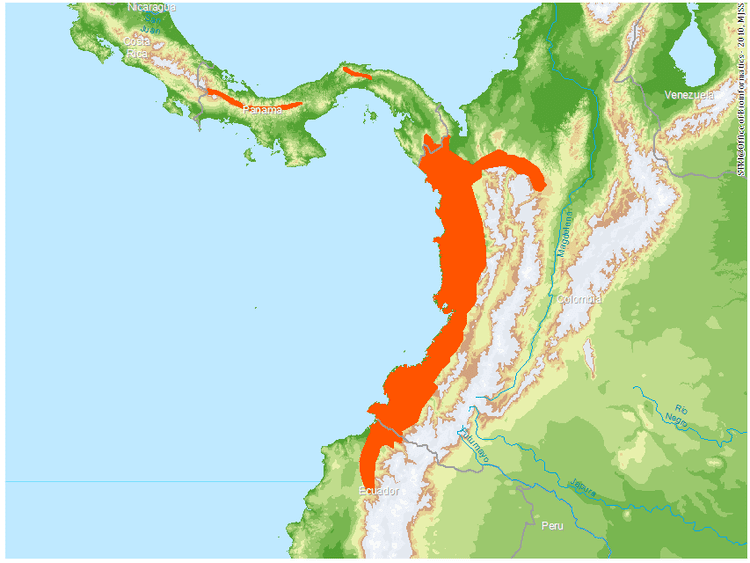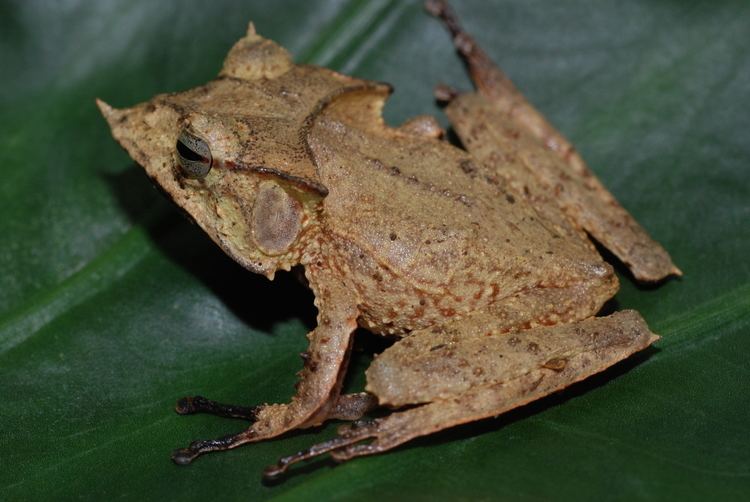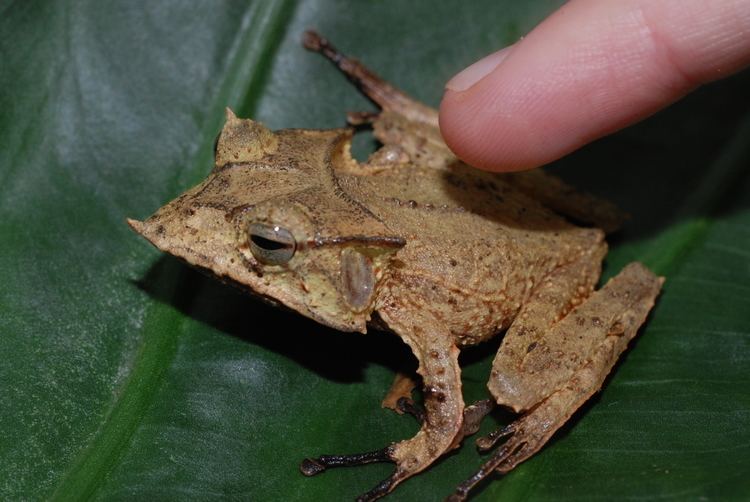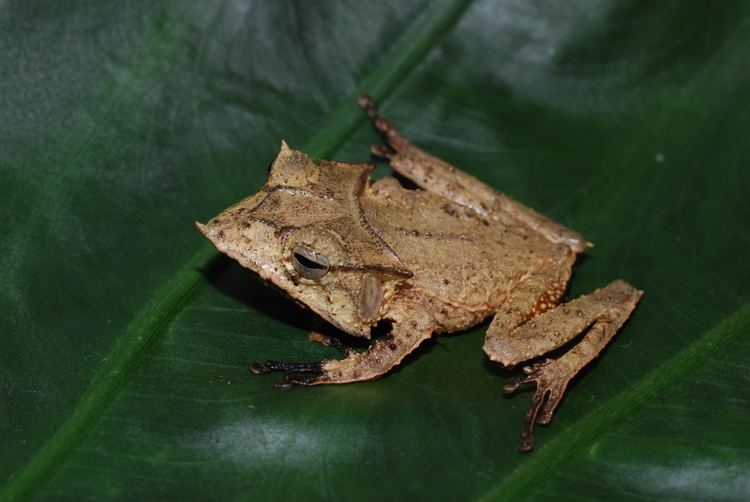Phylum Chordata Rank Species | Scientific name Hemiphractus fasciatus Higher classification Hemiphractus Order Frog | |
 | ||
Similar Hemiphractus, Frog, Hemiphractidae, Horned marsupial, Gastrotheca | ||
Hemiphractus fasciatus, or the banded horned treefrog, is a species of frog in the Hemiphractidae family. It is found in central and eastern mountains of Panama, Pacific slopes of the Cordillera Occidental in Colombia, and northwestern Ecuador. It is a relatively large frog that may readily bite.
Contents

Description

Males measure up to 56 mm (2.2 in) and females to 59 mm (2.3 in) in snout–vent length. They have a distinct, triangular-shaped "helmet" on the head. Colour is light brown (sometimes yellowish or greyish) dorsally, possibly with some darker markings. The thighs are often barred. The ventral surface is brown, becoming darker on the throat and chest.
Reproduction

Breeding probably occurs throughout year. The female carries eggs on her back until hatching. Development is direct, with the juveniles emerging as fully developed froglets.
Behaviour

Hemiphractus fasciatus are nocturnal. When disturbed, they may emit noise. Their defensive behaviour involves throwing back the head and opening the mouth, revealing the bright yellowish orange tongue and interior of the mouth. They can readily bite.
Habitat and conservation
Natural habitats of Hemiphractus fasciatus are very humid lowland, lower montane, and cloud forests.

The species is threatened by habitat loss and the fungus Batrachochytrium dendrobatidis. Captive colony has been established at the El Valle Amphibian Conservation Center, Panama, for possible future re-release into the wild.

